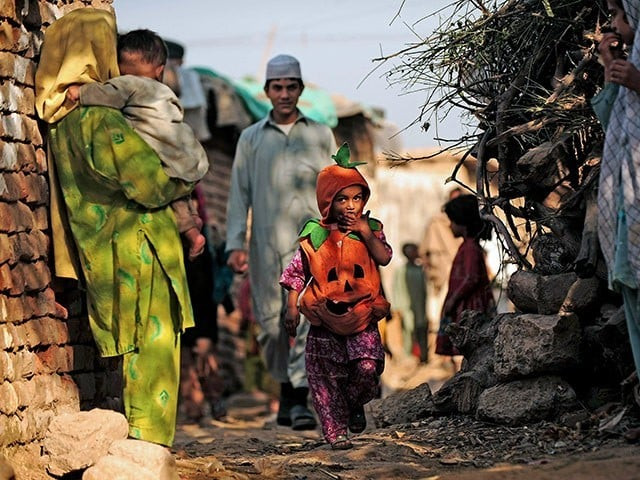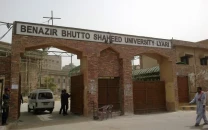Urban sprawl: Rethinking the management of Karachi’s slums
The population in katchi abadis, which was 50% in 1998, has now increased to 61%.

The jirga was held in Balochistan to avoid legal complications as the SC has banned them in Sindh. PHOTO: FILE
A comparative analysis of the 1981 and 1998 housing census conducted by Arif Hasan for his work Participatory Development, 2010 shows that 30,000 units per year were constructed against a demand of about 50,000 housing units per year. The demand-supply gap was accommodated in katchi abadis which have grown at twice the rate of the planned areas. In 1998, 50 per cent of the population or 700,152 households lived in katchi abadis. This population has now increased to 61 per cent or 1.2 million households. In addition to katch abadis a sizable population of poor communities lives in over 1,800 goths (villages) and in the inner city ‘slums’.

The response
During the first Martial Law government in Pakistan, it was decided that squatters within the inner city gave the city an ugly look and needed to be moved to the outskirts of the city. This shift in the policy focus got reflected in the Greater Karachi Resettlement Plan, developed for the Government of Pakistan by the Greek consulting firm Doxiades Associated in 1958. This planning document proposed to create two new Townships - Korangi and New Karachi - on the outskirts of Karachi with the accompanying shifting of squatter populations. In the vicinity of these townships, large industrial areas were also planned and incentives provided to the industrialists to develop these areas.

Development in the industrial areas near the townships, however, did not materialise at the required pace. Thus, 50 per cent of the people that were moved shifted back to squat in the city centre or on the fringes of the city, so as to be near their places of work.
While the government as yet had failed to develop a policy framework to tackle the issue, it did reshape its approach - from constructing houses to providing plots and services. The most significant manifestation of this revised focus was the Orangi Metroville Project (1973). The scheme, however, failed to attract the target group - it was planned that 94 per cent of the plots in the scheme would be allotted to persons with an income less than 1,000 rupees per month. However, people belonging to the middle class, who had mostly purchased plots from the original allottees, moved in to settle. They demolished the utility walls and constructed houses similar to the ones in the middle class areas of the city.
Looking ahead
At the moment, what needs to be understood is that the availability of public land and associated services and infrastructure cannot be unlimited. There is uncontrolled urban sprawl of the city, with most of the development taking place in the peripheral areas of Karachi being beyond the mandate of the government.
Another concern is that the relatively weak and lenient policy towards housing and related regulation in Karachi continues to contribute in facilitating migration to the city from other parts of the country. It is imperative to understand that for the success of an urban development venture to have a wider impact, it has to be embedded firmly within the larger canvas of the overall development dynamics of the city.
In Karachi’s case, the overall planning process for the city failed to account for this parallel development processes and provide the necessary regulatory and environmental safeguards to make the process manageable and integrated with the formal planning processes.
The writer is an urban planner and runs a non-profit organisation based in Karachi city focusing on urban sustainability issues. He can be reached at fanwar@sustainableinitiatives.org.pk
Published in The Express Tribune, November 25th, 2013.



















COMMENTS
Comments are moderated and generally will be posted if they are on-topic and not abusive.
For more information, please see our Comments FAQ